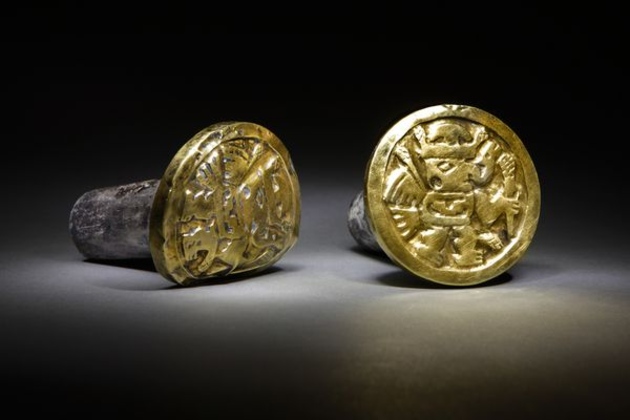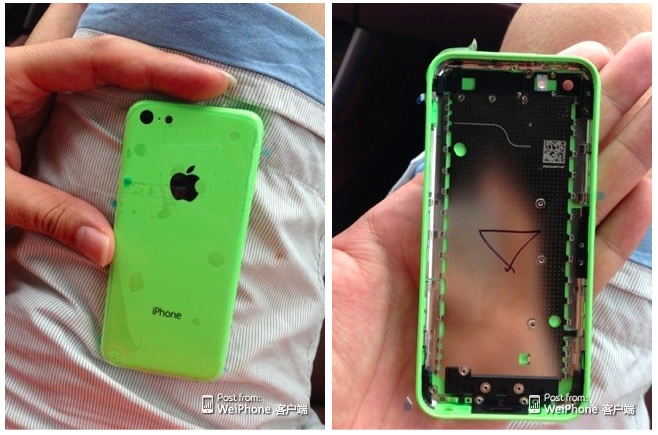
Free cloud storage is easy to come by these days—anyone can give it out, and anyone can give out lots of it. However, the best cloud storage providers give you more than just storage. They offer availability, multi-platform support, security, app integration, and more. This week we're going to look at five of the best cloud storage providers on the market, thanks to your nominations.
Earlier in the week we asked you to nominate the cloud storage providers you thought were the best. You came in with tons of great nominees—way more than we could highlight here. Regardless, some definitely stood higher than the others, especially considering the last time we asked you about cloud storage services. Here's what you said:

If you're reading this, you probably already know what Dropbox is. We've covered Dropbox and services that support it extensively, and most of you here have followed along with our tricks to get as much space as you possibly can. Many people bemoan Dropbox's position at the top of the pack as being a matter of popularity and the fact that they were one of the first to really popularize cloud storage (referral links and storage bonuses didn't hurt), but it's not just popularity that makes Dropbox special. Support for virtually every operating system, both desktop and mobile, experimental and beta builds that add tons of useful features, and a vast third-party developer community taking advantage of its open APIs to build applications on top of it make Dropbox a great cloud storage service, whether you use it for your files and just sync with the desktop clients, or you have another favorite app that uses Dropbox to keep your files synced across devices. Dropbox has its woes (especially with regard to security), but it's a stellar option—if it weren't, people wouldn't keep using it. Plans start with 2GB, but you can get way more than that via referrals, mobile app use, photo and video uploads, or by using an EDU address. You can check out their plans here.
Google Drive's inclusion in the top five came as a bit of surprise, especially considering some of the older contenders that fell off due to lack of votes. Drive has only been around for about a year, but the fact that it combines the tools that formerly known as Google Docs (Docs, Spreadsheets, Presentations, and Drawing), all of your files created with those tools, and 15GB of storage for anything else you want makes it a strong contender. After all, if you're using those tools in your day to day work, it makes sense to use Google Drive for file storage as well. Plus, the fact that it's available in OS X, Windows, iOS, and Android makes it useful at your desk or on the go. Plus, with the right plugins, it can be even more powerful than other services you may also use. Those of you who nominated Google Drive almost unanimously praised its tight integration with the Google services you already use, and of course its pricing. 15GB for free, and you can go here to check out their other plans (as well as see your current utilization) or go here to read more about Drive.
SkyDrive used to be pretty clunky and difficult to use, but Microsoft's cloud storage service has come a long way since those days. It's tightly integrated with Windows now, especially Windows 8 for desktops and tablets, and if you use Office 2013 at all—either on the desktop or on the web—using SkyDrive as cloud storage for all of your files is quick and seamless. SkyDrive also has mobile apps for Windows Phone, iOS, and Android, so you can stay up to date on changes to your files and access them on the go, anywhere you have an internet connection. Desktop clients for Windows and Mac make working with your saved documents and syncing them easy too. If you got in while the latest iteration of the service was still in beta, you probably have a cool 25GB of storage, but even if you signed up today, you'd still walk away with 7GB of storage, 10GB if you're a student, with the option to buy more storage if you need it or run out. SkyDrive also has a third-party app ecosystem and open APIs, and a number of tools that tie nicely into it. Those of you who nominated Skydrive praised it for its Microsoft integration, especially with Office and Windows, and its third party app support.
SugarSync has been around for a long time, and it's incredibly richly featured. It's not as widely used as some of the other big names, but in some ways, it really should be. SugarSync has insanely detailed syncing options, and can back up or sync any files or folders you choose on your system, not just a single folder and all of its contents. SugarSync can work like a backup client, automatically backing up your files as you change them, or you can use it like a traditional syncing cloud service, complete with a drive on your system you drop files in. The service keeps an impressive revision history for each of your files, lets you share, lock down, or password protect individual files on the web or on the desktop, and even makes streaming media to your mobile devices easy. While they don't really put their free plan up front, you can get 5GB for free, and make use of the service's wealth of features, along with their desktop apps for OS X and Windows and their mobile apps for iOS, Android, and Windows Phone. If you need more storage, their pricing plans are pretty attractive.
Bitcasa was surprising contender, considering some of the names that fell short of the nominations, but it's a great service to mention. Aside from having virtually unlimited storage options—we mean in the terabytes, easily, Bitcasa has syncing clients for Windows and OS X, and mobile apps for Android, iOS, and Windows Phone (including tablet versions of all three). Bitcasa knows that you'll probably use that wealth of space for photos, music, and movies, and makes it easy to stream that content to your mobile devices when you're on the go, or to your desktop when you want to use it. They even have a Chrome extension that lets you use Bitcasa as your downloads folder. Bitcasa is free for 10GB, but if you're willing to pay, you can get infinite storage for $99/yr. Seriously—just keep uploading files and they'll be there. If storage is what you really need—not extra bells and whistles—and you're willing to pay for it, Bitcasa is worth a look.
Now that you've seen the top five, it's time to put them to a final vote to determine the community favorite:
We have to give an honorable mention this week to everyone who suggested you Do It Yourself, essentially using a NAS or other storage device at home packed with disks and any free software that lets you access them anywhere you go from any computer whether you're on your home network or off of it. It's super easy to roll your own cloud storage solution with tools like OwnCloud, or just by giving your NAS locked down access to the internet so you can get to your files when you're away. Either way, hats off to those of you who choose to just do your own thing. Besides, someone has to keep the NSA on their toes, right?
Another honorable mention this week goes out to Box (formerly Box.net), which barely missed the top five, and earned high praise from many of you for shoveling out up to 50GB of free space to new users in some cases, and you can still pretty easily find services and promotions offering tons of free space with Box just for signing up and downloading the client. It's not new—it's been around for ages (and was a contender the last time we asked you about cloud storage services), and walks the line between being a consumer-friendly storage and syncing solution and an enterprise-level document management service.
Speaking of referral links, one contender that also missed the top five (but wouldn't, if its supporters had voted correctly instead of just pimping referral links) was Copy, a relative newcomer who's only distinguishing feature, as far as we can tell, is really just that you get 15GB to start, and there's no real cap on how much more you can earn if you get the world to click on your referrals—you get 5GB for each person you get to sign up. Note: Please don't spam the discussions with your referral links. Comments with referral links will be dismissed.
Have something to say about one of the contenders? Want to make the case for your personal favorite, even if it wasn't included in the list? Remember, the top five are based on your most popular nominations from the call for contenders thread from earlier in the week. Don't just complain about the top five, let us know what your preferred alternative is—and make your case for it—in the discussions below.
The Hive Five is based on reader nominations. As with most Hive Five posts, if your favorite was left out, it's not because we hate it—it's because it didn't get the nominations required in the call for contenders post to make the top five. We understand it's a bit of a popularity contest, but if you have a favorite, we want to hear about it. Have a suggestion for the Hive Five? Send us an email at tips+hivefive@lifehacker.com!

from Lifehacker http://lifehacker.com

















 Here's a sign that Android 4.3 "Jelly Bean" will begin rolling out this fall.
Here's a sign that Android 4.3 "Jelly Bean" will begin rolling out this fall.

